Abstract
Polyclonal and monoclonal antibodies to the antibacterial agent chlorhexidine (1,1'-hexamethylene bis [5-(p-chlorophenyl)]biguanide, mol. wt = 505) were raised using a chlorine-generated N-chloro chlorhexidine-keyhole limpet haemocyanin (NCC-KLH) conjugate as the immunogen. Antibodies were detected by ELISA, using a semi-chlorhexidine derivative conjugated to human serum albumin (SC-HSA) as the antigen. Free chlorhexidine could completely inhibit both polyclonal and monoclonal antibody binding to SC-HSA. Direct binding and inhibition ELISA studies revealed that the N-chlorination of chlorhexidine does not significantly alter its specificity as an immunogen or antigen and that chlorhexidine has two identical epitopes. Each epitope consists of the p-chlorophenyl biguanide structure of which the terminal p-chlorophenyl group appears to be immunodominant. Chlorhexidine is, therefore, a symmetrical divalent hapten and this implies that it may be capable of eliciting immediate hypersensitivity reactions by divalent interaction with antibodies induced by chlorine-generated N-chloro-chlorhexidine-protein immunogens. The clinical significance of these findings is discussed.
Full text
PDF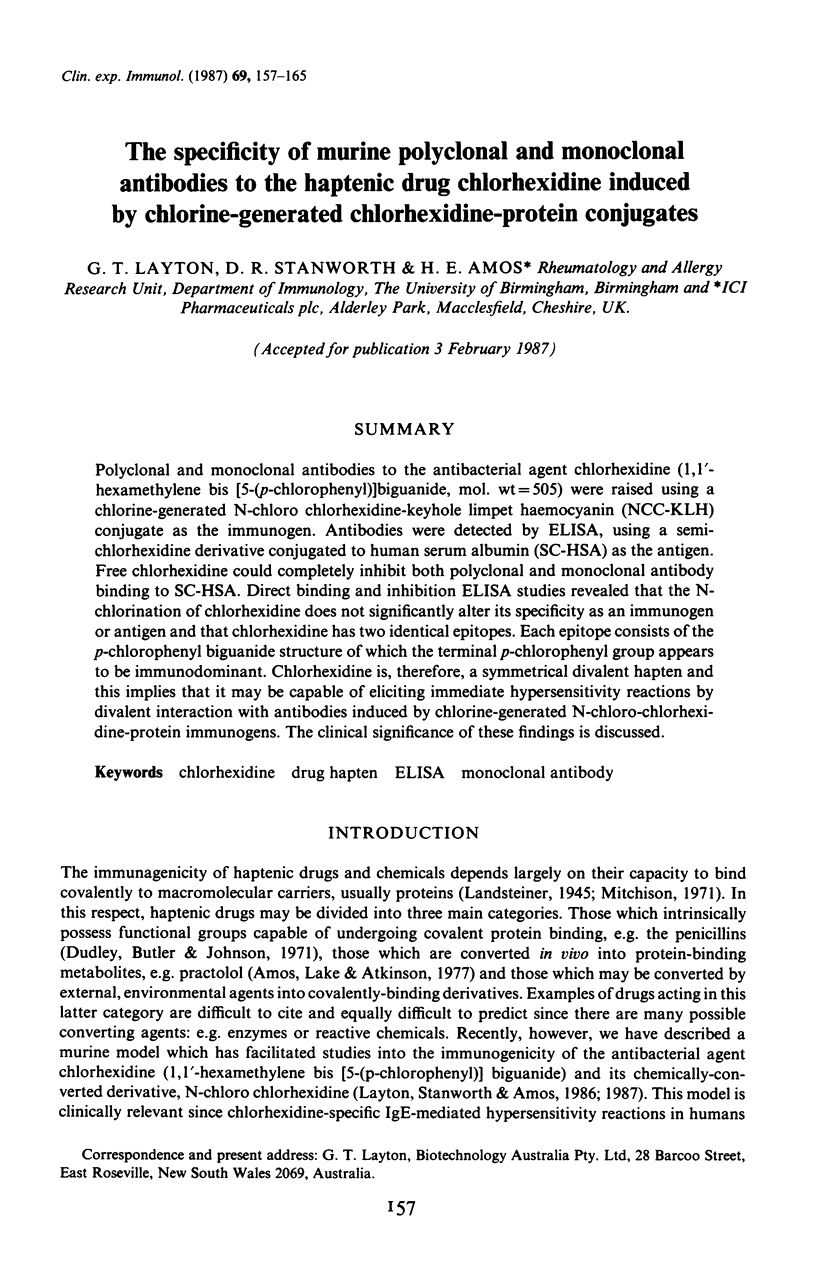
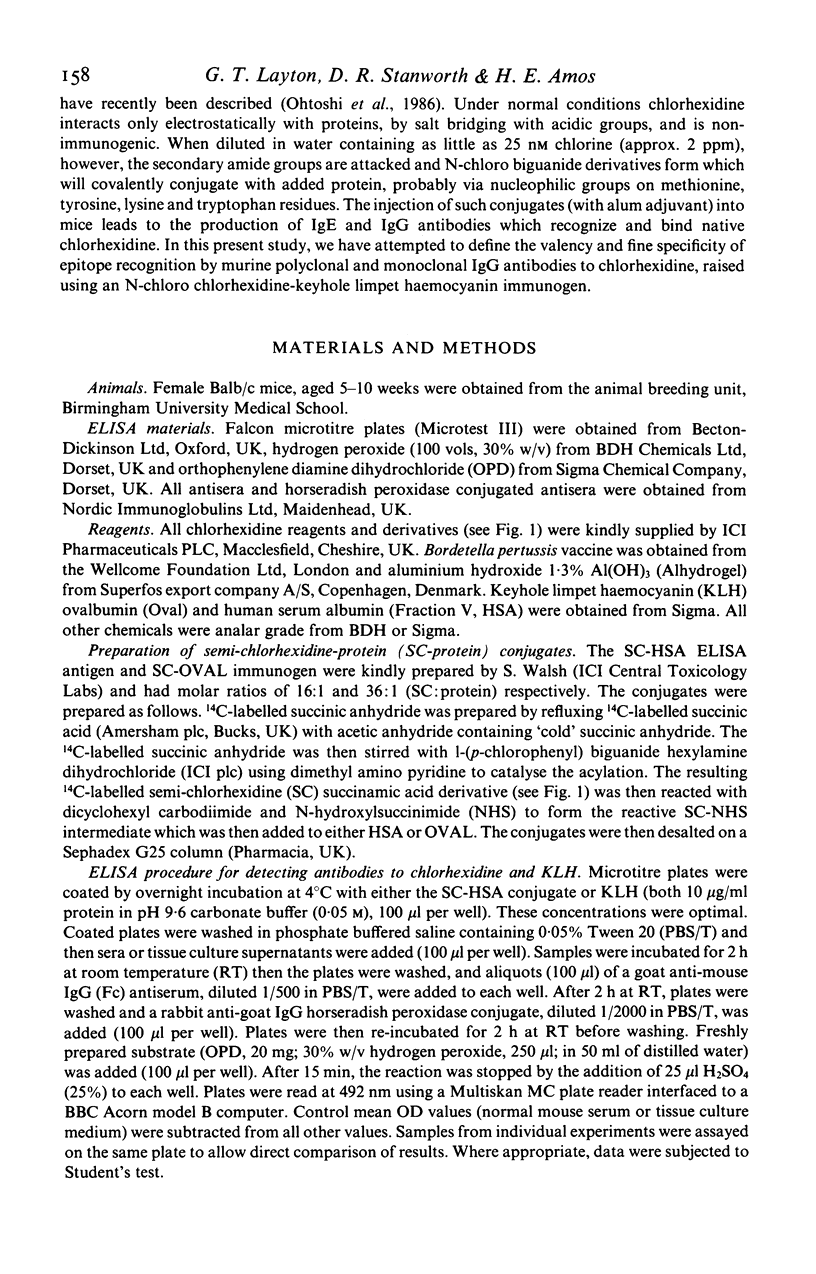
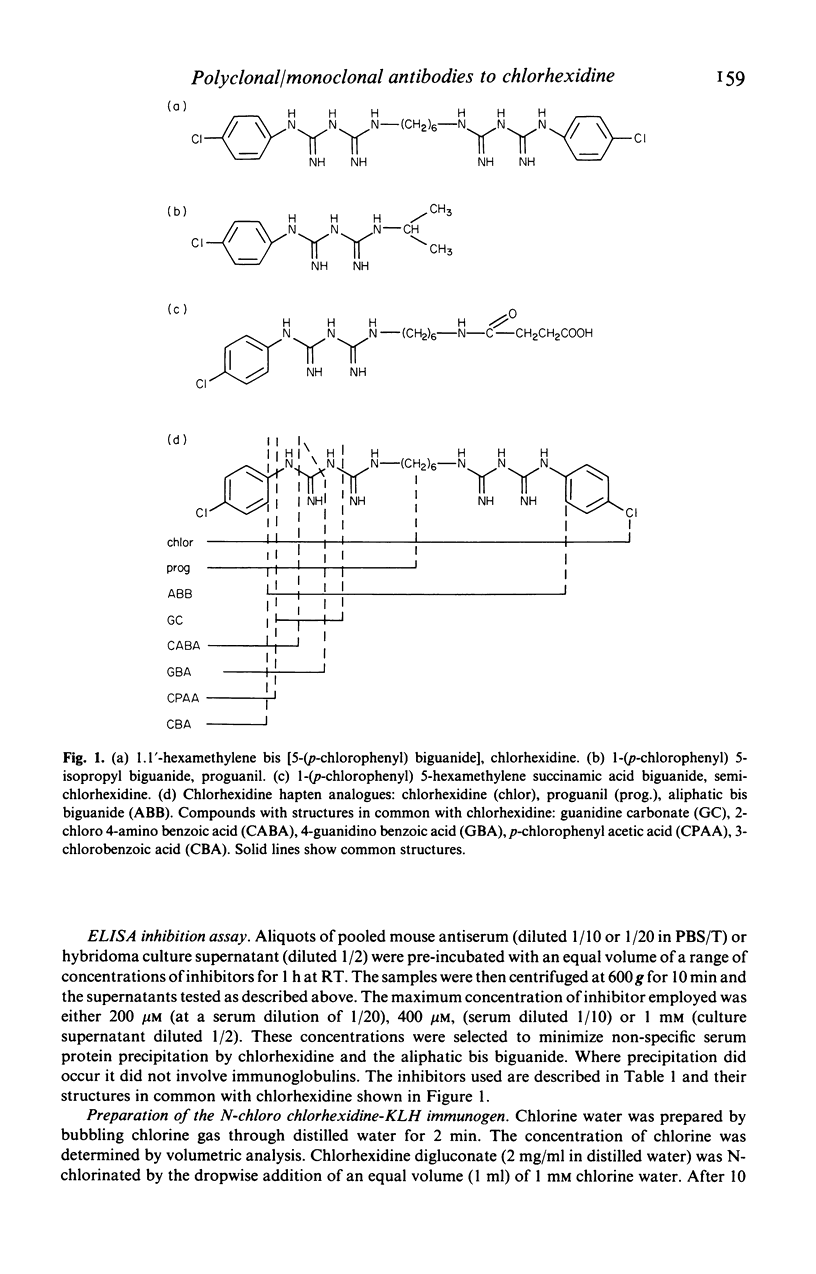



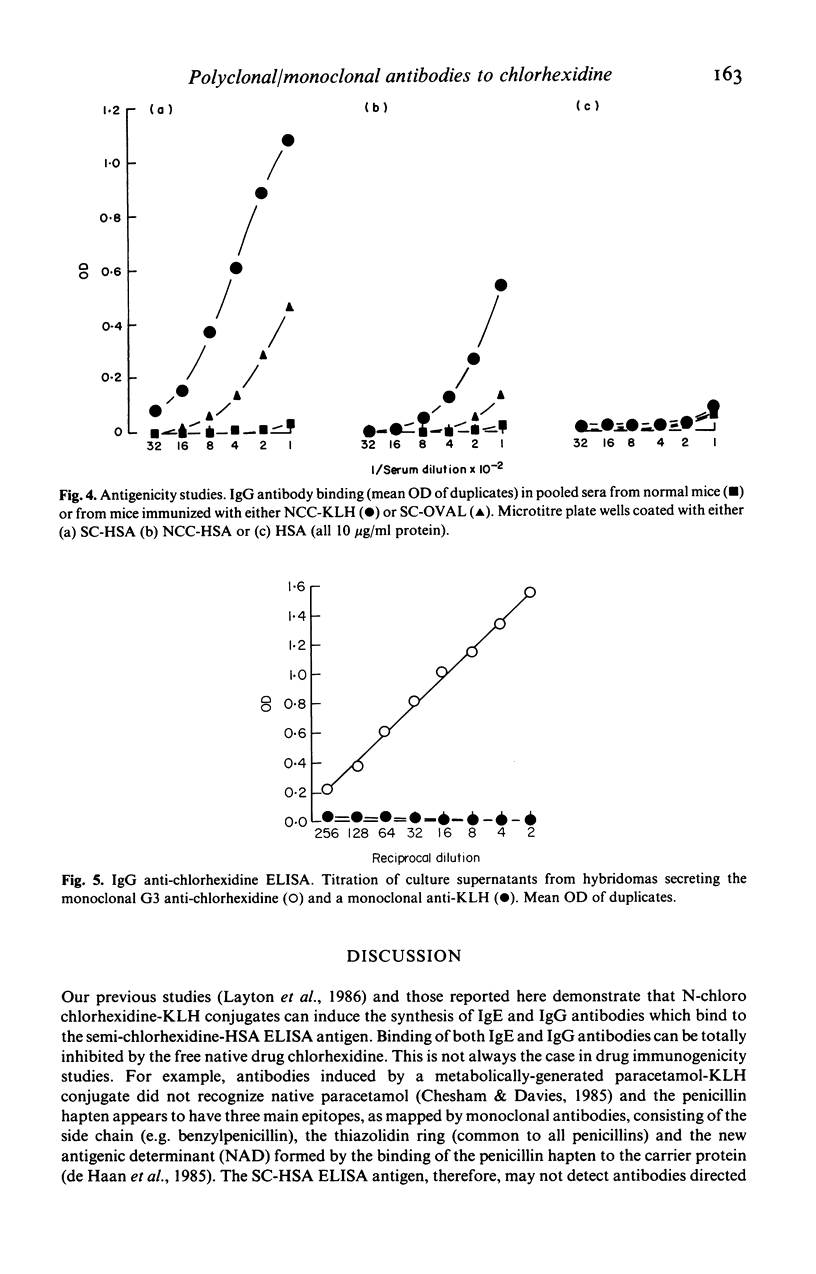
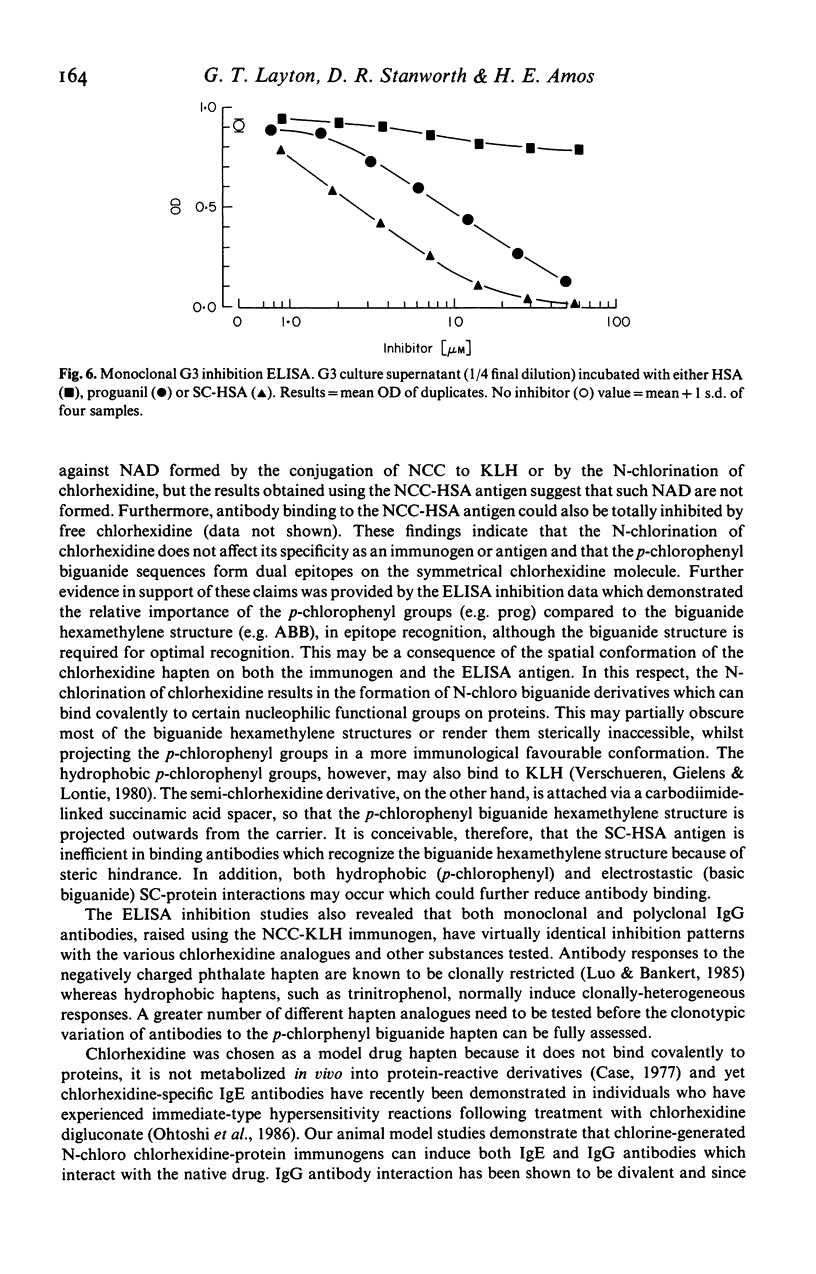
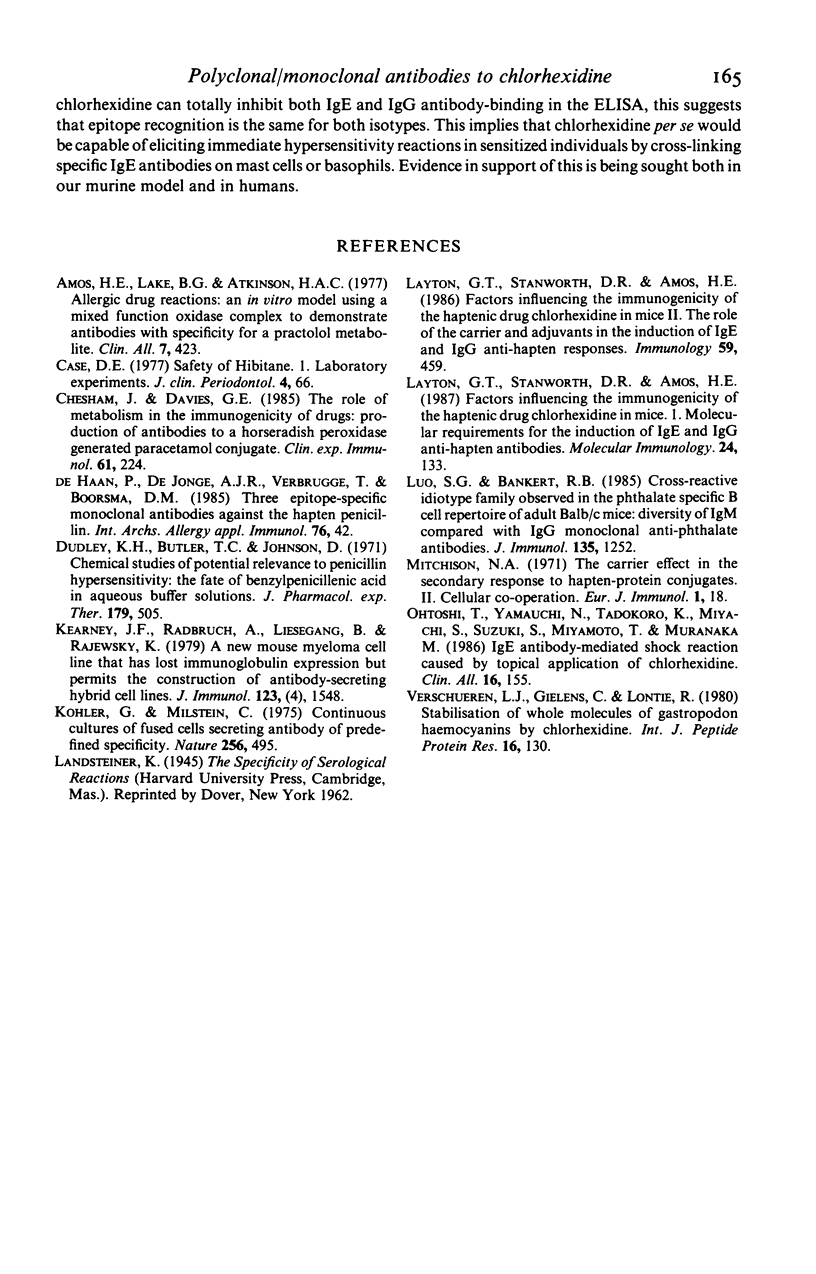
Selected References
These references are in PubMed. This may not be the complete list of references from this article.
- Amos H. E., Lake B. G., Atkinson H. A. Allergic drug reactions: an in vitro model using a mixed function oxidase complex to demonstrate antibodies with specificity for a practolol metabolite. Clin Allergy. 1977 Sep;7(5):423–428. doi: 10.1111/j.1365-2222.1977.tb01473.x. [DOI] [PubMed] [Google Scholar]
- Case D. E. Safety of Hibitane. I. Laboratory experiments. J Clin Periodontol. 1977 Dec;4(5):66-,2. doi: 10.1111/j.1600-051x.1977.tb00052.x. [DOI] [PubMed] [Google Scholar]
- Chesham J., Davies G. E. The role of metabolism in the immunogenicity of drugs: production of antibodies to a horseradish peroxidase generated conjugate paracetamol. Clin Exp Immunol. 1985 Aug;61(2):224–231. [PMC free article] [PubMed] [Google Scholar]
- Dudley K. H., Butler T. C., Johnson D. Chemical studies of potential relevance to penicillin hypersensitivity: the fate of benzylpenicillenic acid in aqueous buffer solutions. J Pharmacol Exp Ther. 1971 Dec;179(3):505–521. [PubMed] [Google Scholar]
- Kearney J. F., Radbruch A., Liesegang B., Rajewsky K. A new mouse myeloma cell line that has lost immunoglobulin expression but permits the construction of antibody-secreting hybrid cell lines. J Immunol. 1979 Oct;123(4):1548–1550. [PubMed] [Google Scholar]
- Köhler G., Milstein C. Continuous cultures of fused cells secreting antibody of predefined specificity. Nature. 1975 Aug 7;256(5517):495–497. doi: 10.1038/256495a0. [DOI] [PubMed] [Google Scholar]
- Layton G. T., Stanworth D. R., Amos H. E. Factors influencing the immunogenicity of the haptenic drug chlorhexidine in mice--Part I. Molecular requirements for the induction of IgE and IgG anti-hapten antibodies. Mol Immunol. 1987 Feb;24(2):133–141. doi: 10.1016/0161-5890(87)90085-x. [DOI] [PubMed] [Google Scholar]
- Layton G. T., Stanworth D. R., Amos H. E. Factors influencing the immunogenicity of the haptenic drug chlorhexidine in mice. II. The role of the carrier and adjuvants in the induction of IgE and IgG anti-hapten responses. Immunology. 1986 Nov;59(3):459–465. [PMC free article] [PubMed] [Google Scholar]
- Luo S. C., Bankert R. B. Cross-reactive idiotype family observed in the phthalate-specific B cell repertoire of adult BALB/c mice: diversity of IgM compared with IgG monoclonal anti-phthalate antibodies. J Immunol. 1985 Aug;135(2):1252–1258. [PubMed] [Google Scholar]
- Mitchison N. A. The carrier effect in the secondary response to hapten-protein conjugates. II. Cellular cooperation. Eur J Immunol. 1971 Jan;1(1):18–27. doi: 10.1002/eji.1830010104. [DOI] [PubMed] [Google Scholar]
- Ohtoshi T., Yamauchi N., Tadokoro K., Miyachi S., Suzuki S., Miyamoto T., Muranaka M. IgE antibody-mediated shock reaction caused by topical application of chlorhexidine. Clin Allergy. 1986 Mar;16(2):155–161. doi: 10.1111/j.1365-2222.1986.tb00759.x. [DOI] [PubMed] [Google Scholar]
- Verschueren L. J., Gielens C., Lontie R. Stabilization of whole molecules of gastropodan haemocyanins by chlorhexidine. Int J Pept Protein Res. 1980 Aug;16(2):130–134. doi: 10.1111/j.1399-3011.1980.tb02945.x. [DOI] [PubMed] [Google Scholar]
- de Haan P., de Jonge A. J., Verbrugge T., Boorsma D. M. Three epitope-specific monoclonal antibodies against the hapten penicillin. Int Arch Allergy Appl Immunol. 1985;76(1):42–46. doi: 10.1159/000233659. [DOI] [PubMed] [Google Scholar]


